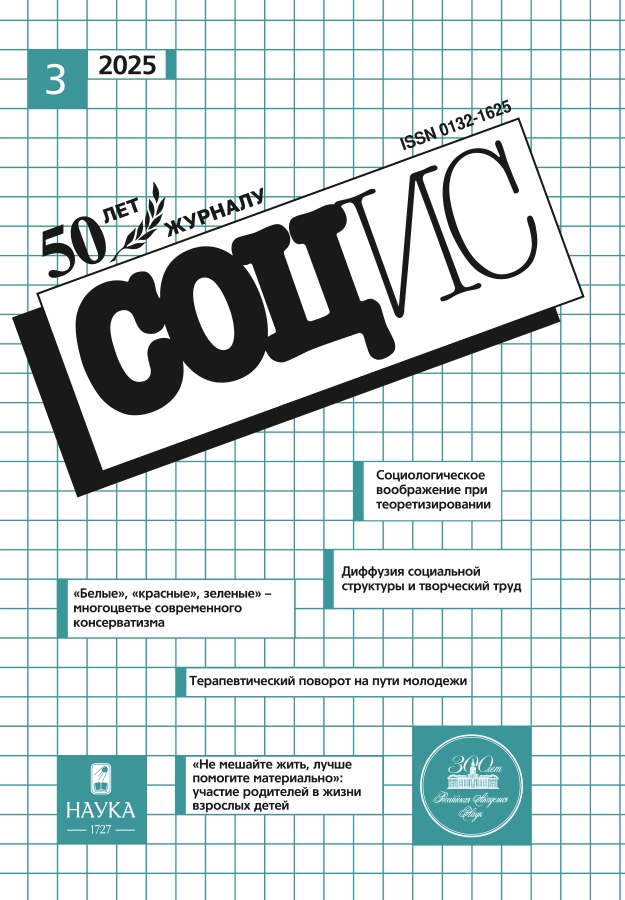“White”, “red” and “green”: the ideological diversity of modern russian conservatism (a content analysis of telegram channels)
- Авторлар: Pain E.A.1
-
Мекемелер:
- Institute of Sociology of FCTAS RAS
- Шығарылым: № 3 (2025)
- Беттер: 40-53
- Бөлім: POLITICAL SOCIOLOGY
- URL: https://rjraap.com/0132-1625/article/view/685181
- DOI: https://doi.org/10.31857/S0132162525030042
- ID: 685181
Дәйексөз келтіру
Аннотация
Russian conservatism is considered in the article as the philosophical core of a new integrative ideological basis of Russian society, which has been constructed since the 2000s. The content analysis of Telegram channels allowed us to identify three main socio-political trends of conservatives, conventionally named: “white”, “red” and “green” For all these groups, the political ideal is concentrated in the historical past. For the “whites” – in the Russian; for the “reds” – it is associated with the restoration of the Soviet Union as a great leftist international power; the “greens” – see as their ideal a society with the strictest patriarchal-religious Islamic principles. The study revealed not only differences in the goals of each trend in relation to the desired future, but also a different interpretation of “traditional values.” Ideologically, these conservative movements are united only by negative consolidation – rallying against common enemies, although our research has shown that the images of enemies of the three mentioned movements are different in many ways. In this regard the article raised the question about the strength of the ideological union of modern conservative movements in Russia.
Негізгі сөздер
Толық мәтін
Авторлар туралы
Emil Pain
Institute of Sociology of FCTAS RAS
Хат алмасуға жауапты Автор.
Email: painea@mail.ru
Dr. Sci. (Politics), PhD in History (Ethnology), Lead Researcher
Ресей, MoscowӘдебиет тізімі
- Berdyaev N. A. (1907) The fate of Russian conservatism. In: Philosophical, social and literary experiments. St. Petersburg: Izd-e M. V. Pirozhkova: 227–236. (In Russ.)
- Verkhovsky A. (2004) Serafimovskiy klub. Romantika liberal’nogo konservatizma [Serafimovsky club. The Romance of Liberal Conservatism]. Neprikosnovennyy zapas [Перевод]. No. 5: 26–35. URL: https://magazines.gorky.media/nz/2004/5/serafimovskij-klub-romantika-liberalnogo-konservatizma.html (accessed: 02.02.2025). (In Russ.)
- Hobsbawm E., Ranger T. (1992) The Invention of Tradition. Cambridge; New York: Cambridge University Press.
- Medushevsky N. A. (2017) Doktrina «dukhovnykh skrep» kak osnova mezhdunarodnogo rossiyskogo obshchestva [The doctrine of “spiritual bonds” as the basis for the integration of Russian society]. Vestnik RGGU. Seriya “Politologiya. Istoriya. Mezhdunarodnyye otnosheniya” [Перевод]. No. 2: 123– 131. (In Russ.)
Қосымша файлдар














